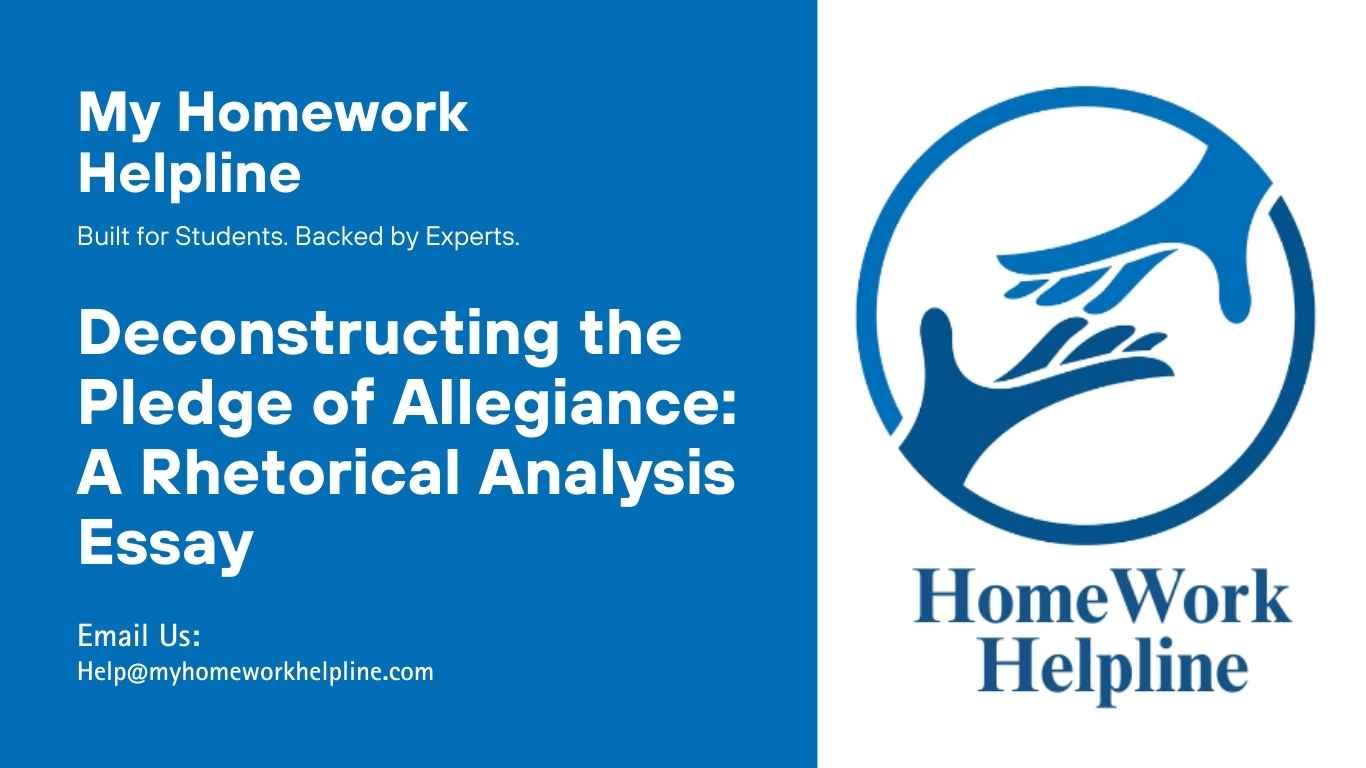Rhetorical Analysis of the Pledge of Allegiance: An Essay
Summary
The Pledge of Allegiance was first written in 1892 by Francis (UShistory, 2023). Francis aimed the pledge to be used by many countries’ citizens. The pledge was later changed in 1923 to mainly base it on US citizens by adding words supporting allegiance to the Flag of the United States of America (History, 2023). In 1954, a religious aspect was added to the pledge by adding the words “under God”. The change was pushed by President Eisenhower as a response to the threat posed by the Communists. The original pledge published in 1892 was to be stated with a military salute, which later changed to extending the arm towards the flag after adding the United States theme to the pledge (UShistory, 2023). The salute gesture when reciting the pledge was later changed by keeping the arm over the heart to distinguish it from the Nazi’s salute(Bomboy, 2023).
Need help with English literature assignments or essays like Rhetorical Analysis of the Pledge of Allegiance? Our English Literature Homework Helpline provides expert support with essay writing, SOAPStone analysis, and homework assistance. Whether it’s a module discussion, full essay, or assignment requiring critical thinking and rhetorical evaluation, we deliver plagiarism-free, well-researched guidance. Get reliable assistance today to strengthen your analytical skills, improve grades, and master literary analysis.
Analysis
Regarding the SOAPStone acronym. The subject of Brian’s article is the history and evolution of the Pledge of Allegiance. The Occasion of the article is to inform readers of the pledge’s history and changes made to it over time. The article’s audience is US citizens or anyone interested in the history and evolution of the Pledge of Allegiance. The article’s purpose is to educate readers about modifications made to the pledge and the political, religious, and historical context associated with the changes. Brian is the speaker of the article and presented the article with an informative and historical tone. The author included events and facts associated with the evolution of the Pledge of Allegiance to express a viewpoint without bias. The article’s effect is to provide readers with an understanding of the historical development of the pledge and its significance today.
Post
The rhetorical situation of the article focuses on significant changes made to the Pledge of Allegiance over time. The historical changes made to the pledge were political. The world today has changed and the original pledge published in 1982 seems more relevant than the latter versions.
Reference
Bomboy, S. (2023). The history of legal challenges to the Pledge of Allegiance. Available at https://constitutioncenter.org/blog/the-latest-controversy-about-under-god-in-the-pledge-of-allegiance
History (2023). Who Created the Pledge of Allegiance? Available at: https://www.history.com/news/who-created-the-pledge-of-allegiance
UShistory (2023). The Pledge of Allegiance. Available at https://www.ushistory.org/documents/pledge.htm

